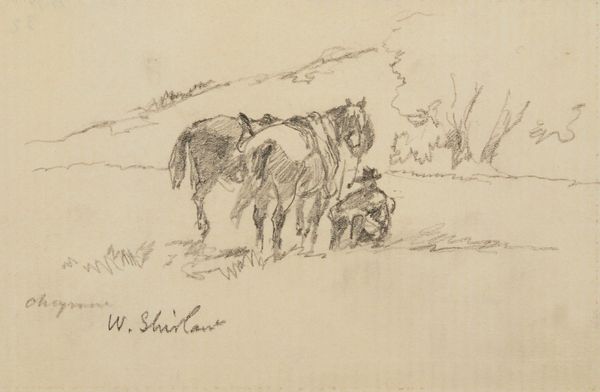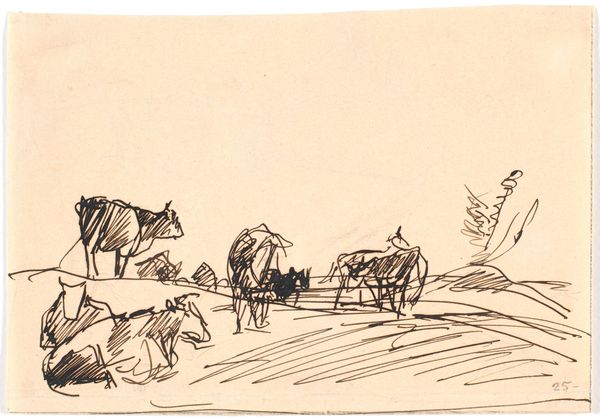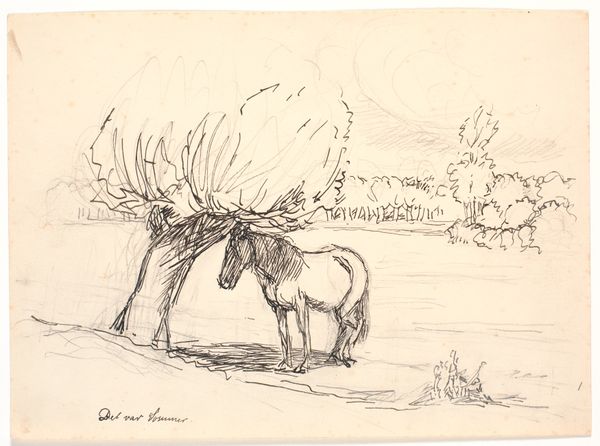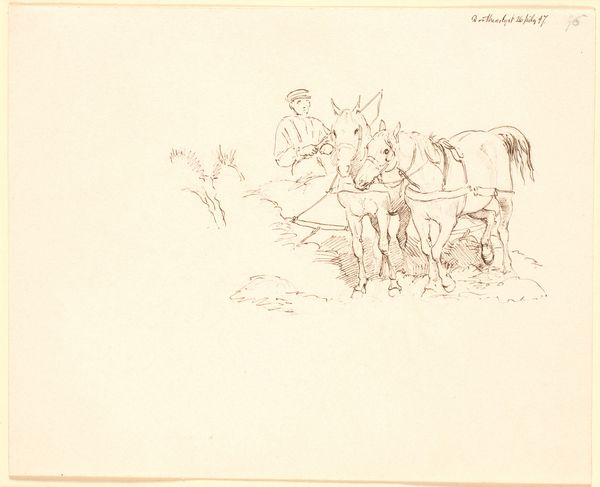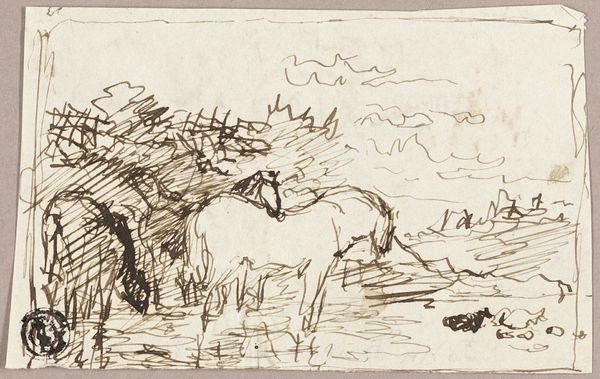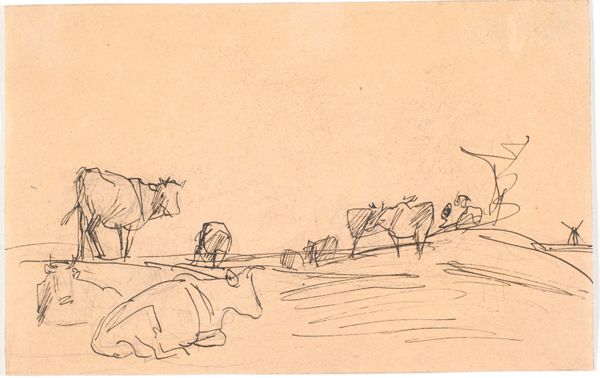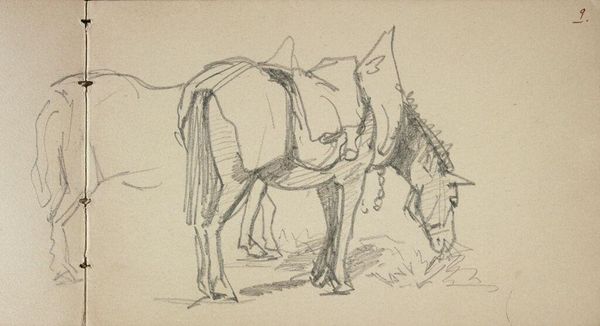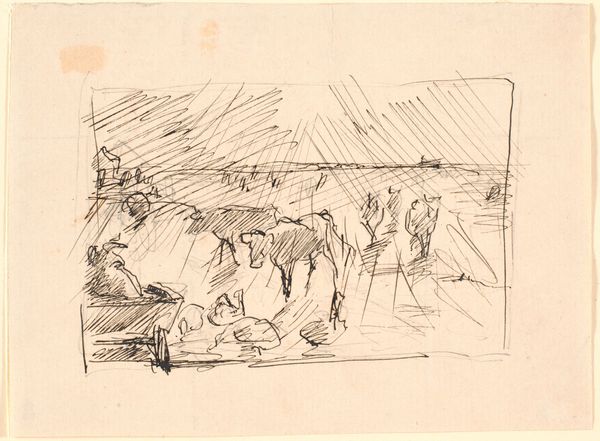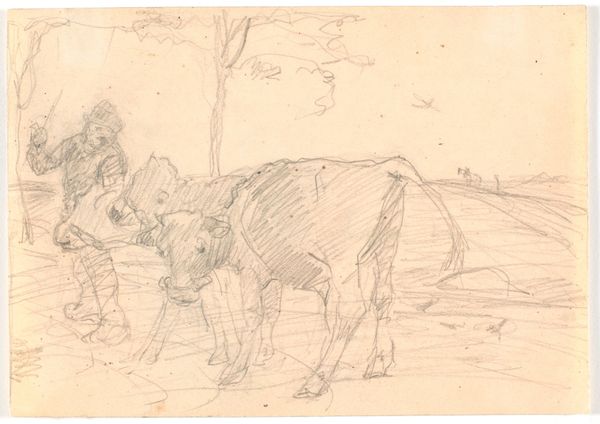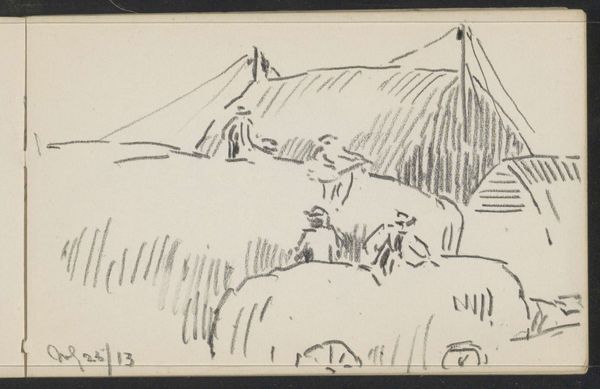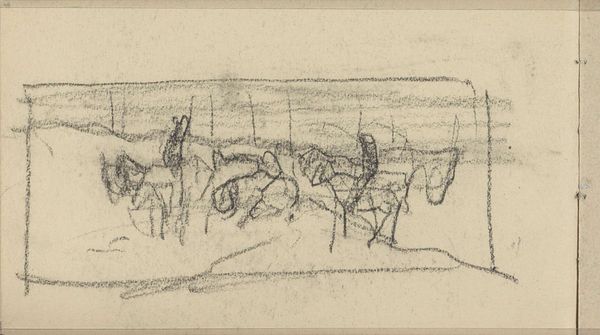
drawing, graphite
#
drawing
#
landscape
#
graphite
#
academic-art
#
realism
Dimensions: 4 1/2 x 6 5/8 in. (11.43 x 16.83 cm)
Copyright: Public Domain
Curator: Let’s turn our attention to Walter Shirlaw’s graphite drawing, titled “Sketch made on Indian Reservation,” dating from around the 19th century and now part of the Minneapolis Institute of Art's collection. What are your first impressions? Editor: Sparse and desolate, but peaceful. The grouping of horses and figures suggests both community and weariness, if that makes sense. The landscape in the background is so minimal, almost an afterthought. The whole scene feels fleeting and observed rather than posed. Curator: It speaks to a critical juncture in American history, when encounters between colonizers and Indigenous populations were violently transforming social landscapes and land use. As we view this artwork through a decolonized lens, we see its documentary and social value to rethink stereotypical views of Native Americans during the 19th century. Shirlaw captured a quiet, mundane moment within this intense setting. Editor: The symbolism of the horse here is striking. Horses represented freedom, mobility, and wealth in many Indigenous cultures. Seeing them here, in a reservation setting, raises poignant questions about agency and lost autonomy. How were horses depicted in other artworks of the era? Curator: They were typically portrayed with Indigenous warriors, romanticizing their power and agility. This sketch offers a very different narrative, showing them resting. The work might invite conversations on Indigenous rights movements today. Editor: You are right to raise the political implications; beyond that, I notice how the resting posture echoes themes of subjugation, though subtly. Curator: Art can challenge entrenched narratives, promoting intercultural dialogue about the shared past to forge a more equitable and compassionate future. It underscores the importance of education and understanding in addressing historical injustice and stereotypes. Editor: This understated work resonates far beyond its initial visual impact. The delicate drawing unveils hidden levels of symbolism regarding autonomy. It quietly encourages us to look beneath accepted accounts and address more profound inquiries.
Comments
No comments
Be the first to comment and join the conversation on the ultimate creative platform.
